Barging over for 2011
The end of our six months of barging in France has arrived. We are sad to be leaving but will be pleased to be back in Oz for a while.
We travelled about 32km up the Bourgogne Canal (and then returned), visiting places we missed last year. This was pleasant and relaxing. It also enabled us to start on the chores required before leaving the boat.
Everything went smoothly, with a few interesting interludes.
At one place, they were dredging the canal. A scoop mounted on a raft would scoop the mud into a Peniche (400 tonne barge). The Peniche would then take it downstream, through a lock, to where a land-based scooper would remove the mud.
In between these activities, the Peniche would have to reverse quite a few kilometres between the locations. Not an easy task and also rather strange for people such as us encountering a large barge travelling in reverse.
When the Peniche was empty, it could not reverse under one bridge and so had to wait, put water in the holds and then carefully reverse under. This was all very time consuming.
Quite a few areas of the canal were shallower than last year so even with our shallow draft, we were sometimes sitting on the bottom at moorings.
Turning around at Flogny was particularly difficult. Indeed, the experienced lock-keepers there said we would not achieve it and need to travel the 8Km return to the next "official" turn-around spot.
Well, we got around but it took three tries, each in a different section of canal. Finally we managed to gently swing around with the rudder sitting in the mud on one side and the bow almost scraping the bottom and bank on the other side.
Now, we are at Laroche Migennes and have completed preparations for winter. Everything is stored, cleaned and ready for our lift-out which should happen late this afternoon. Then we will over night in a "Mobilo" (rented mobile home) near the boat yard and head off to Paris-Singapore-Sydney early tomorrow morning.
Yesterday, a "big brother" Peniche came to the quay, just behind us. The couple operating it were very friendly and performing similar tasks to us- touching up paint, sweeping, washing. For once, I (David), was able to answer a "where is" question...."where is the Boulangerie?" The first time I have not had to say (in French), "Sorry, we are here on a boat and we do not know."
The Peniche was empty and thus very high in the water. Then they loaded with grain. A truck would pull into the quay and empty the grain into the holds. This happened about 24 times with perhaps 200 tonnes of grain in total. The grain will be used to make beer. We think that water levels in the canal and silting made it easier for the loading operation at the town quay here rather than upstream at a silo. We do not think it happens very often in the middle of a town. The ducks and swans are really enjoying the spilled grain. Here are some interesting statistics regarding cost of transport in France. One litre of diesel fuel will transport one tonne of freight:
100km by truck
300km by train
500km by barge
And so, this year's blog draws to a close after 2,560km and 6 months of fantastic travelling and adventuring.
We will "see" all our readers next year with a new blog.
All the best,
Dave and Penny




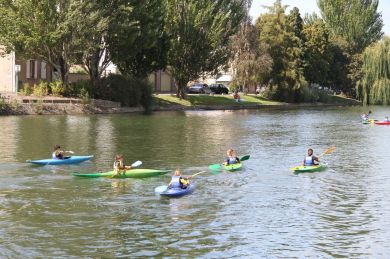


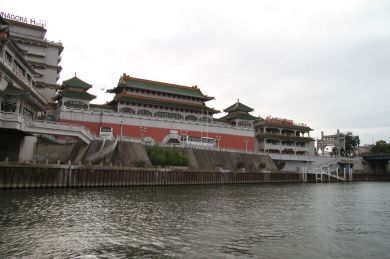




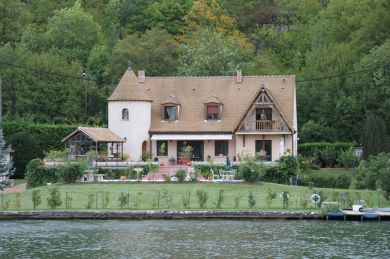













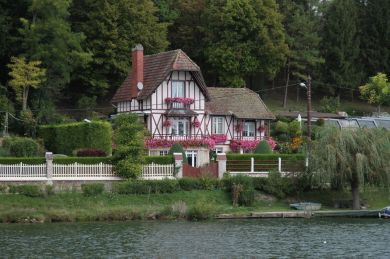


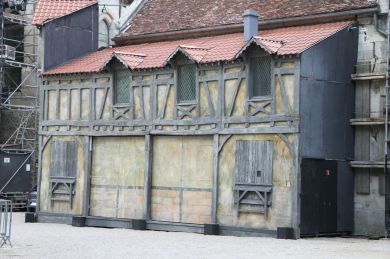





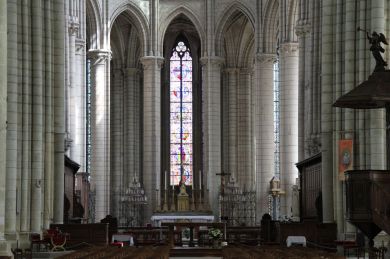


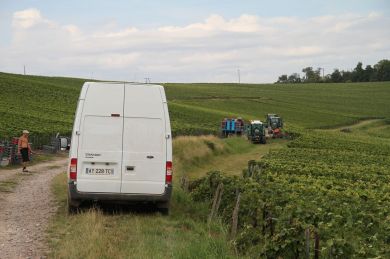
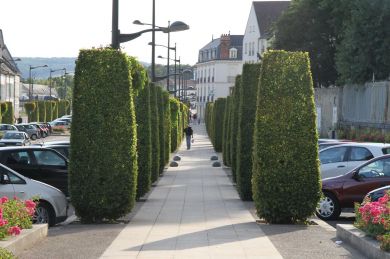
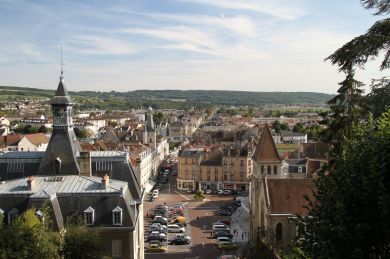










Herman: Mmmm.... so the white van was not the local equivelant of the RBT? Photos and Blog commentary are great. (09/13/11)